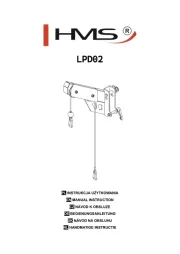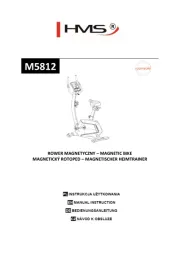HMS Premium YM10 Manual
Læs gratis den danske manual til HMS Premium YM10 (40 sider) i kategorien Ikke kategoriseret. Denne vejledning er vurderet som hjælpsom af 32 personer og har en gennemsnitlig bedømmelse på 4.7 stjerner ud af 16.5 anmeldelser.
Har du et spørgsmål om HMS Premium YM10, eller vil du spørge andre brugere om produktet?

Produkt Specifikationer
| Mærke: | HMS Premium |
| Kategori: | Ikke kategoriseret |
| Model: | YM10 |
Har du brug for hjælp?
Hvis du har brug for hjælp til HMS Premium YM10 stil et spørgsmål nedenfor, og andre brugere vil svare dig
Ikke kategoriseret HMS Premium Manualer










Ikke kategoriseret Manualer
- Physa
- DriverGenius
- Fisher
- Trelock
- Tripp
- Gamber-Johnson
- BIOS Living
- Mircom
- Seasonic
- Tiny Love
- Hydrofarm
- InvisibleShield
- Be Cool
- Casablanca
- Plasma Cloud
Nyeste Ikke kategoriseret Manualer









